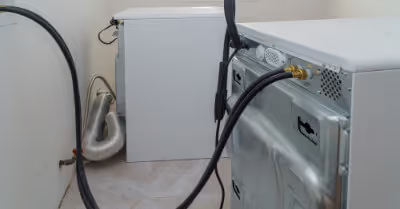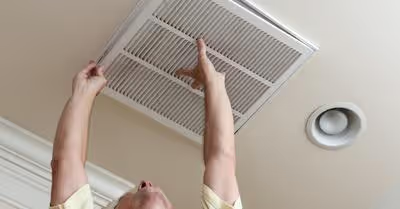Table of Contents
About Mortgage Escrow
As noted above, mortgage escrow is a savings account managed by the borrower’s mortgage servicer, designed to ensure that payment of property taxes and homeowners insurance is done on time.
When the homeowner’s insurance and property taxes bills are due, the mortgage servicer will then use money from the escrow accounts to service those payments.
You may be probably asking yourself why the lender may be worried about insurance and taxes. Shouldn’t they only be concerned with successful loan payment?
Well, from the lender’s perspective, a successful loan refers to a situation where the borrower pays principal and interest on time until the mortgage is reduced to zero.
However, if the homeowner fails to repay the mortgage for whichever reason, the mortgage lender can just sell the house via foreclosure and recover the mortgage amount.
But, if the house being foreclosed had unpaid homeowner’s insurance, property taxes and similar tax liens, then the taxing authority will have to be paid first before the lender. And the remaining money from the foreclosure sale may not be enough to cover the outstanding mortgage balance.
On the other hand, if a house is in decent condition because the homeowner’s insurance money was readily available to fix various forms of damage compared to one the was left to fall apart, then it will fetch more money during the foreclosure sale.
Therefore, by insisting that a certain portion of the borrower’s mortgage payments goes to the mortgage escrow account, the lender is making sure that money will always be available to pay property taxes and homeowners insurance.
In case the borrower is unable to repay the mortgage, then the lender will be able to recover the outstanding balance through a foreclosure sale. In simple terms, a mortgage escrow is designed to protect the lender against any form of loss.
Is a Mortgage Escrow Account the Same as a Home Buying Escrow Account?
Most people tend to assume that a mortgage escrow account is the same as the escrow account that you create when buying a house. However, the two accounts are not the same. And you can’t use them interchangeably.
The home buying escrow is a short-term escrow account that you create when you are buying a house. Home buying escrow accounts are usually managed by a neutral third party such as an escrow company, a title agent, or an escrow agent.
Home buying escrow accounts usually hold funds like earnest money. Earnest money helps to protect the seller, in case the buyer opts out of the process.
And if the sale goes through, then the earnest money can be used to cover some of the buyer’s closing costs or applied to the down payment.
A mortgage escrow account, on the other hand, will last the entire life of the mortgage. And as noted earlier, the money that goes to that account will be used to cover the property taxes and homeowner’s insurance.
How Much Money Goes to the Mortgage Escrow Account?
The amount of money that goes to the mortgage escrow account every month will be estimated during the application process. It will then be finalized at closing.
To determine the figure, the lender will consider your home’s property taxes and annual home insurance payments. Private mortgage insurance may also be added to the amount where applicable.
For instance, if your home’s property taxes amount to $5,000 annually and your homeowners' insurance amounts to $1000 per year, then your mortgage servicer will need to collect at least $6,000 from you, which translates to approximately $500 per month.
This amount will then go to your mortgage escrow account, and be used to pay your monthly property taxes and home insurance premiums.
Home insurance premiums and property taxes are usually paid once or twice per year. So, when it’s time to pay these bills, the money will always be available.
What is a Mortgage Escrow Cushion?
Homeowner's insurance and property taxes tend to fluctuate every year. For instance, your property’s value may increase, consequently pushing up your property taxes.
Also, your community may want to build a children’s sports facility, and they may raise property taxes to fund the project.
Furthermore, if you add an extra bathroom or bedroom to your home, then your homeowners’ insurance premiums will increase.
Due to such situations, federal and state laws allow mortgage lenders to collect and hold more money. The additional money collected is known as mortgage escrow cushion. Mortgage escrow cushion shouldn’t be more than two monthly escrow payments.
For example, if your estimated property taxes and homeowners insurance premiums amount to $4,000 per year, then the mortgage lender can collect an extra $1000 as a mortgage escrow cushion.
So, instead of paying $333 per month, you will be paying approximately $416. The extra in your mortgage escrow account will be used to cover increases in property taxes and insurance premiums.
What is Mortgage Escrow Analysis?
Mortgage lenders conduct an escrow analysis at the end of every year. The analysis is designed to help the lender determine whether the borrower has enough money in their escrow account to cover payments for the next year.
The mortgage lender will break down the amount month by month. And from those calculations, the lender will be in a position to determine whether the lender has an overage or a shortage.
In case the money available in your mortgage escrow account is not enough to cover payments for the coming year, then you can cover the deficit can be covered via a one-off payment or the payments can be spread over the next twelve months.
If the lender determines they collected more than they should, then you should receive a refund. Federal laws state that lenders should refund any extra money collected above $50 over the required amount.
Hence, if the lender collected $200 more than they should, then the borrower should receive a refund of at least $150.
It’s highly advisable to go through the mortgage escrow analysis report, once the lender releases it. Going through the report will help the borrower to catch any mistakes such as missed payments or too much money in the mortgage escrow account.
And if you identify such mistakes, make sure you notify the mortgage servicer right away.
When Do You Need a Mortgage Escrow Account?
Most lenders will require the borrower to have a mortgage escrow account. The amount of down payment and the type of loan that you are borrowing will also determine whether you will need a mortgage escrow account.
Conventional Loans
For conventional loans, it’s the lender’s decision whether to open an escrow account. But in most situations, the lender will require the borrower to have a mortgage escrow account, if their down payment is less than the property’s purchase price.
However, if the borrower makes a down payment of 20% or more, then the lender may opt against setting an escrow account for the borrower.
It’s the lender’s belief that the borrower will be motivated enough to save money for insurance premiums and property taxes, considering the high equity they have on the house.
So, what happens if you can’t manage to raise the required 20% down payment but you still don’t want an escrow account?
In such a situation, opening an escrow account will be a must. The good news is, you may be allowed to cancel the mortgage escrow account after you’ve managed to reach at least 20% of the home’s equity.
However, for you to be allowed to cancel the mortgage escrow account, you must have been making payments on time and have the loan for at least 12 months.
If the lender cancels the escrow account, and then later finds out the borrower hasn’t paid insurance premiums and property taxes, then they will set up the account right away.
Federal Housing Administration Loans
All Federal Housing Administration (FHA) loans must have a mortgage escrow account. With FHA-insured loans, if the borrower fails to repay the mortgage and their property is not worth enough to repay the balance through a foreclosure sale, then the FHA will fully compensate the mortgage lender.
Considering the FHA also wants to minimize its losses, it will require every borrower to have a mortgage escrow account.
Hence, any person who is looking to apply for FHA-backed loans should be ready to have a mortgage escrow account.
Veterans Affairs (VA) Loans
According to the VA Lenders Handbook, the U.S Department of Veterans Affairs doesn’t require lenders to set up escrow accounts for the borrowers.
However, it’s the borrower’s responsibility to pay hazard insurance premiums and property taxes, among other similar items. As you may expect, most lenders who deal with VA loans will require the borrower to have an escrow account.
So, any person looking to purchase a home via VA loans will most likely be required to have a mortgage escrow account.
Higher-Priced Mortgages
Higher-priced mortgages are loans whose annual percentage rate (APR) is significantly higher than the conventional interest rates and fees.
Federal laws require lenders to set up mortgage escrow accounts for these types of mortgages.
In these mortgages, the escrow account will remain in place for at least five years. Once the 5 years are over, the borrower may request to cancel the account, if the borrower doesn’t have delinquent payments and the loan’s unpaid balance is less than 80% of the property’s original value.
Can You Cancel a Mortgage Escrow Account?
Mortgage escrow accounts provide a convenient means for the lender to pay for homeowners insurance premiums and property taxes.
In short, it provides a safety net for the lender, to ensure the borrower is in a financial position to keep up with various homeownership costs.
But if the lender has made at least 12 mortgage payments on time, their mortgage account is healthy and they don’t have outstanding debts on property taxes and homeowners insurance, then the lender may agree to cancel their mortgage escrow accounts. And here is the process to follow:
Meet the Equity Threshold
Equity is the difference between the loan amount owed and the property’s value under current market conditions. Home equity is normally expressed as a loan-to-value ratio.
For example, if a lender puts a down payment of 20% on the home, then their loan-to-value ratio will be 80%.
Lenders will only agree to cancel a mortgage escrow account if the target property meets an equity threshold of 78% or lower.
So, if the property fails to meet the equity threshold, then the lender will refuse to cancel the mortgage escrow account.
Fill Out a Request Form
If the borrower meets the equity threshold, then they can make a formal request to the lender, asking them to cancel or remove the escrow account. The request should be done formally, to ensure each party has a copy.
The cancellation request form will typically include a list of requirements the borrower must fulfill for escrow account cancellation. Also, the lender will be required to provide personal details like their name, mortgage account number, and contact information, among others.
Return the Form
After filling out the request form, the borrower should then return it to then mail it or fax it to the lender. Most lenders will reply within a couple of days.
In case the lender fails to reply after several weeks, then the lender should follow up, either via email or call. If the lender agrees to close the escrow account, they will notify the borrower right away.
And if they refuse to close or cancel the account, they will provide reasons for doing so. It’s important to note that the lender will apply an escrow closing fee, which may be deducted from the mortgage escrow account.
Benefits of Having Mortgage Escrow Accounts
Mortgage escrow accounts offer benefits both to the lender and the borrower or homeowner.
For Homeowners
For the homeowner, the mortgage escrow account helps to keep homeownership costs more manageable, since these costs are spread throughout the year.
Furthermore, in case the homeowner experiences financial hardships, they don’t have to worry about paying for homeowners insurance and property taxes, since the money available in their mortgage escrow accounts will take care of that.
Another benefit of a mortgage escrow account for the homeowner is that they don’t have to keep track of the different due dates for the bills. When the insurance premiums and property taxes are due, the mortgage servicer will ensure they are paid on time.
For Lenders
Lenders have to ensure that borrowers pay their insurance premiums and property taxes on time.
If these bills are not paid, then the local tax authority may decide to pay tax liens on the property. And the lender may fail to recover the outstanding mortgage balance if the home is foreclosed.
Also, if the homeowner is unable to pay for homeowners insurance, then significant damage to the property could lower its value. If the lender was to sell the house through a foreclosure, then they may never recover their money.
Beware of Mortgage Escrow Scams and Frauds
Mortgage escrow accounts hold large amounts of money. And they have recently become a target for fraudsters and scammers.
For example, the fraudster may duplicate the mortgage servicer’s or lender’s email address or website contact, in an attempt to convince the borrower to reveal their login credentials.
Other scammers may call with numbers that appear almost identical to the one used by the mortgage servicer or lender, asking the borrower to wire or transfer the money in the account to the fraudster.
The fraudster will then withdraw that money immediately and then disappear completely. While the money may be intercepted in some situations, it’s mostly irretrievable.
To avoid these scams and frauds, borrowers are advised to review all the communications they receive related to their escrow accounts. They should then alert the mortgage servicer or lender if they notice anything suspicious.
Mortgage escrow accounts help lenders to protect their financial interests when it comes to mortgages. They also cushion borrowers, by making funds available to pay property taxes and homeowners insurance premiums, even when a borrower is experiencing financial challenges. Whether a mortgage escrow account will be needed or not will depend on the type of loan as well as the amount the borrower can manage to put as a down payment.
Recent Articles
















